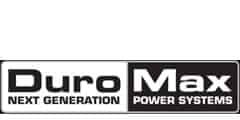Most of us don’t give a second thought to where the electricity in our lives comes from. We just flip that magical switch and energy lights our homes, powers our televisions, and heats our ovens.
Of course, that all changes the instant your power goes out. Flip the switch as much as you’d like; until the problem is fixed, you’re stuck without electrical energy. Unless, that is, you’re lucky enough to own a generator.
Most people think of generators as a handy little appliance that can be used when there’s a power outage, but there’s so much more to a generator than emergency use. Maybe you’ve taken a portable generator camping, or you’re planning to live off the grid and are looking into a generator system to power your home for the long haul. Whatever the reason for your interest in generators, this article will guide you through the ins and outs of generator know-how and offer you a crash course in generator specifications and safety considerations.
The History of Generators
The story of the generator starts all the way back in August of 1831. The first generator didn’t look all that much like the generators of today; the apparatus wasn’t complex, expensive to build, or even very large. But for all its simplicity, the first electrical generator ushered in a new age of electric energy that revolutionized the world. And the inventor of this extraordinary little device? A man named Michael Faraday.
Michael Faraday
Ask any physicist about electromagnetism, and they’re guaranteed to mention Michael Faraday at least once during their response. Faraday was an English physicist and chemist, and is generally regarded as one of the greatest scientists of the 19th century. Although he had several notable achievements in his first field of practical chemistry, Faraday is best known for his contributions to the scientific field of electricity and magnetism.
Setting the stage for Faraday’s work with electric currents was a discovery made in 1820 by the scientist Hans Christian Ørsted. Ørsted realized that a magnetic field was produced when electricity was allowed to flow through a wire. This discovery, when combined with similar work by the scientist André-Marie Ampère, made Faraday curious about the nature of electricity. He began conducting experiments with coils of wire and magnets in an attempt to determine more about the nature of electricity. His work would prove to be revolutionary.
Faraday’s Law of Induction
On August 29, 1831, Faraday conducted his most famous experiment. First, Faraday wound wire around one half of a thick iron ring. The second half of the iron ring was then wound with an insulated wire connected to a battery. The apparatus was hooked up to a galvanometer, an instrument that would help detect the presence of an electric current in the wire.
From this apparatus, Faraday was able to experimentally observe that a current had been induced in one coil of wire by the current in the other wire. His observations led to the publication of Faraday’s Law of Induction, which states that a change in the magnetic environment of a coil of wire will “induce” an electric current in the wire. Essentially, moving a magnet around a coil of wire could produce electric energy.
Dynamos
A few months after Faraday’s experiments with induction, he put his theories to the test. By moving a magnet in and out of a coil of wire, Faraday was able to induce an electric current in the wire. After a bit of clever engineering, Faraday rigged up an apparatus that could produce a continuous current by rotating a copper disk between the poles of a magnet.
This nifty invention was called a “dynamo,” and became the first iteration of the many electrical generators we use today. Dynamos also led directly to the creation of the electric motor, which is basically just a dynamo in reverse: feed an electric current to a copper disk, and you’ll make the disk spin.
The Rest is History
All generators that came after the original dynamos operated on Faraday’s principle: the motion of a moving magnet is converted into electrical energy. After Faraday’s first dynamo, the evolution of the modern generator advanced relatively quickly:
1832
A scientist from France, Hippolyte Pixii, expands on Faraday’s dynamo concept by creating a dynamo that induces pulses of electricity separated by no current. Pixii also creates the first alternator; a dynamo whose current changes direction (known today as an AC or Alternating Current).
1830s-1860s
Battery power is still the most popular method to supply electrical energy; unfortunately, batteries aren’t yet reliable or powerful enough to be a commercially viable energy option.
1860
The first dynamo to provide continuous DC (Direct Current) power is created by Antonio Pacinotti.
1870s
New dynamo designs begin popping up everywhere; each iteration trying to improve upon the last. Each new design helps make dynamos more efficient and longer lasting. All the hype from these different dynamos leads to work on the subject by famous scientists around the world, including Lord Kelvin and Thomas Edison.
1878
The Ganz Company becomes the first in the world to us AC generators commercially.
1880-1886
AC (Alternating Current) energy systems are developed in Europe. Across the pond, the American energy market is flooded with DC (Direct Current) dynamos.
1890s to today
The 1890s marked the true emergence of electrical generators commercially. Because of the surging demand for electrical energy, the design of the generator improved rapidly. Even with all this improvement, the basic principle behind electrical generation remained rooted in Faraday’s principles of electromagnetic induction. The generators we use today are not so very different from the original dynamos of the early 19th century.
How Does a Generator Work, Exactly?
At their core, generators aren’t all that complicated. Using Faraday’s Principles of Electromagnetic Induction, generators use a rotating coil of wire and a magnet to generate electrical energy. This basic design encompasses everything from small generators that run on propane to the massive powerplants that convert moving water into enough energy to power entire cities. But to get electrical energy out of a generator, you need to put some sort of fuel into the system.
The Fuel
Practically anything can be used as fuel for an electrical generator. Some common fuel sources include:
- Diesel
- Oil
- Nuclear
- Biodiesel
- Coal
- Hydro (Water)
- Gasoline
- Biomass
- Wind
- Propane
- Thermo
Most small generators are powered by fuels that are burned by the machine: diesel, biodiesel, gasoline, oil, or propane.
Larger, industrial generators are a bit different. These massive systems create the energy that powers the electrical grid. Because they need to produce such a large amount of energy, it’s inefficient for these systems to burn light-weight fuels.
Most power plants have historically been run on coal or crude oil. These fuels are burned to heat water to steam, which then rotates the generator system to create electrical energy. More recent attempts to incorporate renewable energy into electrical energy generation have led to the increased use of alternative fuel systems. Some of these systems still burn their fuel to create energy, as in the case of biomass (a collection of once-living things including wood, dead crops, and even garbage). Other renewable energy sources don’t need to burn anything to heat up steam: thermo energy uses the heat inside earth’s mantle to power energy production, and nuclear power plants use the energy stored within atoms to generate heat.
Some energy sources don’t require heat at all. Hydroelectric systems use moving water (found within rivers and ocean tides) to spin massive turbines connected to magnets. And wind turbines are spun by the movement of earth’s atmosphere; no fancy conversions required.
The Mechanics
Whatever the fuel used, the basic guts of a generator are the same and are based on the very first dynamo created by Michael Faraday. All generators move a magnet around a coil of wire, and that movement generates electrical energy. You can think of the motion of the magnet as “pushing” the electrons along, generating a flow of electrons known as an electric current. We harness that electrical current to power everything from our lights to our televisions.
The basic spinning magnet is the heart of a generator. The system can be scaled up or down according to one’s energy needs. Portable generators contain a small spinning magnet and a small coil of wire, while electrical generation plants have massive, superpowered magnets and huge coils of wire. And as we’ve already discussed in this article, you can make the magnet spin by either burning fuel, or harnessing something already in motion (water, wind, etc.)
The Output (Electrical Energy)
You probably already know that electrical generators, well, generate electricity. But the nitty-gritty of electricity is a bit more complicated. What exactly is electrical energy? And why is it so darn useful?
Electrical energy is one of the numerous types of energy found on earth. Energy is generally defined as the ability to do work, and electrical energy is no exception to that definition. We’ve found all sorts of different ways for energy to accomplish useful work for us: electric vehicles move us from one location to another, electric stovetops heat our food, and electric computers let us work online.
Even though electricity can seem almost magical in its ability to accomplish work, at its core, the basics behind electrical energy are relatively simple. You probably remember learning about the different parts of an atom in school: protons and neutrons make up the center, or nucleus of an atom, while subatomic particles called electrons orbit around the outside. While the nucleus of an atom is stuck tightly together, an atom’s electrons are free to move around. The motion of these electrons allows for all sorts of things, from chemical bonds to electrical energy.
The motion of electrons results in a type of kinetic energy (kinetic, from the Greek word kinetikos, meaning ‘of motion’). As electrons move around, they create what’s known as an electric current. Michael Faraday and subsequent scientists learned how to tap into that current of electricity and use it to power all sorts of things in our everyday lives.
Important Terminology
Whether you’re taking a physics class or looking to add an electrical generator to your home, there are a few terms you should know that might come in handy. Think of this as your electricity cheat sheet:
Electrical Energy
A type of energy caused by the motion of electrons. These electrons form an electric current, which powers most of modern life.
Joule
No, not like the crown jewels. A Joule (J) is the scientific unit of energy; more joules equals more energy.
Watt
Unless you’re a scientist, you’ll probably use Watts (W) to measure the energy around your house. You know how the lightbulb box says 5 watts? That’s a measure of how much energy that lightbulb uses each second. One watt is equal to one joule of energy used per second.
Watt-hours
This term will probably show up on your electrical bill. A watt-hour (Wh) shows how much energy something has used over a specific amount of time. Your electrical bill will likely be expressed in kilowatt hours, which is a unit of measurement 1000 times larger than a single watt-hour.
Circuit
You can think of a circuit as the circular path that electrons follow as they move in their electrical current. Circuits direct the electrical current and make it useful; everything in your home that uses electricity is part of a circuit.
Turbine
The part of a generator that spins is called a turbine. Depending on your fuel source, your generator might include a steam, gas, water, or wind turbine.
Efficiency: In the context of generators, efficiency is a measure of how effective a generator is at producing electricity. Some types of generators are more efficient than others, which means they’re better able to transform the energy of their fuel into electrical energy.
Alternating Current (AC)
An alternating current is one which changes direction. AC systems are often used in buildings because this type of energy can traverse long distances with relative ease.
Direct Current (DC): A current that doesn’t change direction. Many electrical systems utilize DC, and students often study DC electrical systems before tackling the more complex alternating currents.
Types of Generators
We’ve already covered the different types of fuel used to run a generator, but there are three main categories that most generator types fall under: Standby Generators, Portable Electric Generators, and Industrial Electric Generators.
Portable Electric Generators
Most people that have used an electrical generator have used a small, portable version. Portable generators are often used for camping or any other situation where you want to use electricity but don’t have an electrical outlet handy. Portable generators have even made an appearance at tailgate football events, where they’re used to power televisions in the middle of a stadium parking lot.
Portable generators are also the number one type of generator purchased by people for disaster preparation. Generator sales tend to skyrocket right before projected hurricanes or large storms, as people anticipate severe power outages.
Aside from their convenient portability, smaller generators are extremely popular because they’re often much cheaper than their larger counterparts. Portable generators usually cost between $400 to $1,500 – not a bad deal when it comes to peace of mind.
Standby Generators
Standby generators are larger than portable electrical generators, but that’s because they need to be. These generators are called ‘standby’ for a reason: their purpose is to provide lots of power in the event of a power grid outage.
Many public services have standby generators. Hospitals usually have complex generator systems so that their power is barely impacted in the event of a power outage. Schools, too, often have at least a small standby generator to keep some lights on if there is a problem with the electrical grid.
Recently, homeowners have begun hopping on the standby generator bandwagon. Home standby generators are larger than their portable counterparts and are designed to be installed permanently. Although they take up more space, the payoffs can be substantial: standby generators can produce nearly double the electrical power compared to smaller, portable generators. Most standby generators are also programmed to start automatically whenever the power goes out, so you don’t have to fumble around in the dark to get the generator going. Standby generators are generally broken into two main categories:
- Alternating Current (AC) Generators run on principles of an alternating current. Many small appliances such as refrigerators, washing machines, and dishwashers use alternating current. AC generators can power these devices without the need for an adaptor.
- Direct Current (DC) Generators create a direct electrical current. Newer electronic devices, including some electrical cars, run on DC, and would be able to hook up to a DC generator without an adaptor.
Because both AC and DC power are used so extensively, most generators come with an adaptor that lets you connect any type of electric appliance to the generator. Most DC run devices are already designed to adapt to an alternating current, so no additional adaptor would be necessary.
Industrial Electric Generators
The last generator category is industrial electric generators. These are the massive systems that provide energy to the power grid, and thus to our homes. According to the U.S. Energy Information Administration, there were 22,731 electric generators at over 10,000 different electric power plants in the United States as of December 31, 2019.
Many of these power plants are still run by burning coal, but several other types of energy systems have been implemented across the country. As of 2016, the U.S. had:
- 1,793 natural gas-powered electricity plants (34% of the nation’s electricity generation)
- 400 coal-powered electricity plants (30% of the nation’s electricity)
- 61 nuclear electricity plants (20% of the nation’s electricity)
- 1,444 hydroelectric plants (7% of the nation’s electricity)
- 999 wind-powered electricity plants (6% of the nation’s electricity)
- 1,721 solar-powered electricity plants (1% of the nation’s electricity)
- 1,076 oil-powered electricity plants (0.5% of the nation’s electricity)
Every single type of power plant on the above list, aside from solar, has a generator that is run by Faraday’s Principle of Induction.
Generator Brands
There are hundreds of different companies that produce generators. Some of the brand names are likely to be familiar; think Honda, Ford, and Yamaha to name a few. It’s easy for car manufacturers to jump on the generator train because motors and generators both work on the same principles. Here’s a brief list of some major generator brands you might encounter:





















About Home Generators
If you’re in the market for a home generator, there are several things to consider:
What Will You Use It For?
This is the first question you should ask yourself before investing in a home generator. If you want a generator to take camping, then you certainly shouldn’t buy a massive standby generator that hooks into your home’s electrical system.
Remember, home generators come in two main types: portable and standby.
Portable generators are lightweight and maneuverable, and are only made for occasional use (emergencies, camping, etc.) Larger standby generators are a permanent installation that’s meant to run your house when the power goes out.
Standby generators can produce much more power and can run safely for longer periods of time in the event of an emergency.
Before you purchase a generator, you’ll want to critically think about what you’re buying it for. If you’re trying to prepare for a long-lasting emergency or want to live off the grid, a standby generator will fit your needs best. If you want portable power for camping, or an electrical safety net to help you weather brief power outages, then a portable generator would be a better option.
Budget
Once you’ve determined which type of generator will suit your needs, you’ll want to consider your budget. While generators have become more affordable in recent years, larger units can still end up being quite pricey. Some sellers have financing options, particularly for standby generators that are installed by specialized companies in much the same way an air conditioning unit would be.
Typically, portable generators cost from $400 to $1,500. Larger units will cost more, but they’ll also provide you with more power and energy efficiency.
Standby generators can cost anywhere from $3,000 to $6,000, depending on the system. If you’re planning to use a generator to live off the grid, you’ll want to spring for a larger and more complex unit that will work effectively to provide you with constant energy. If you’re wanting a standby generator for short-term, emergency use, the unit won’t need to be quite so robust.
Power Requirements
To determine how much power you’ll want out of your generator, it can be helpful to check your electrical bill at the end of the month. Your month-end statement will give you a good idea of how much energy you use monthly and allow you to estimate how much power you might need out of a standby generator in the event of an emergency. Keep in mind that if there is an emergency, you probably won’t have the same electrical needs. In a pinch, you would just want enough power to charge your phone, run the oven and refrigerator, and possibly heat or cool your house if you can swing it. Standby generators can provide between 5,000 and 20,000 watts, depending on the system.
If you’re shopping for a portable generator, you can determine the power requirements of your system by checking out the details of the appliances you’re planning to run. Portable generators usually provide from 3,000 to 8,500 watts. To put that number in perspective, it takes 1,200 to 1,500 watts of power to run your dishwasher. It only takes 6 watts or so to charge your smartphone, so even a very small portable generator should handle that task with ease.
The Details
Once you have a general idea of the type of generator you’re after and the price range you can afford, the fun begins. Different generators come with different bells and whistles, including:
- Automatic transfer switches
- Automatic voltage regulators
- Auto safety shutdown
- Transfer switches
- Cooling mechanisms
- Transportation devices (handles, wheels, etc.)
- Different fuel sources
If you’re looking at a standby generator, you’ll want to find one that turns on automatically in the event of a power outage. In contrast, an important feature for a portable generator would be ease of transport: how heavy is the machine? Will it fit in your car when you go camping?
For both types of generator, you’ll want to pay special attention to the type of fuel used. Most portable generators run on gasoline, which is difficult to store in large quantities or for a long time. Standby generators usually have more options for their fuel source – propane is common, but natural gas and regular gasoline are also available options.
Keep in mind that you’ll be paying for generator fuel, and that can add up quickly. You also want to factor in availability: if you want a gasoline generator but live hours from the nearest gas station, it can be a hassle to keep your generator in working order.
Are Generators Safe?
A crucial part of generator ownership is generator safety. Many newer generators have safety features built into them, but any generator requires an owner who is aware of the risks and care requirements of the system. To stay safe with your generator, you should do the following:
- Don’t add fuel to the generator while it’s on and running. Let your generator cool off completely before adding fuel.
- Don’t overload the generator (know the power limits of your system, and don’t run too many appliances on it at once).
- Use heavy duty, outdoor extension cords for any portable generator.
- Keep your generator dry. Don’t use a portable generator in rain, and never touch your generator with wet hands.
- Store your generator fuel safely, in an industry-approved safety can.
- Check with your local fire department for any laws regarding fuel storage in your area.
- Don’t store fuel in living areas, or near a fuel-burning appliance.
- Follow the instructions included with your generator unit.
- Never use a portable generator inside an enclosed area (yes, that includes your home and garage.) Generators can cause carbon monoxide buildup, which can be deadly.
Carbon Monoxide Risk
The largest danger associated with generators is carbon monoxide poisoning. Between 2005 and 2017, the Consumer Product Safety Commission reported that 900 people died of carbon monoxide poisoning from portable generators. In the same time period, an estimated 15,400 people were treated in emergency rooms for carbon monoxide poisoning caused by portable generators.
Carbon monoxide is particularly deadly because it’s colorless, odorless, and practically unnoticeable. It can cause flu-like symptoms in small doses and can cause long-term effects after even a single instance of poisoning. Just five minutes of high carbon monoxide exposure is enough to be fatal.
Portable generators can emit as much carbon monoxide as approximately 450 cars. And many people turn to portable generators for power without knowing how to use them safely. After a large storm, it’s common to see a spike in carbon monoxide poisonings from people using generators excessively or in enclosed spaces. Even running a generator in an open garage can lead to carbon monoxide poisoning inside the house. Although an open door can help vent exhaust, carbon monoxide is heavy enough that it settles and seeps into the home.
Some research has even found that carbon monoxide poisoning from generators can be more deadly than the natural disasters prompting generator use in the first place. To avoid carbon monoxide poisoning, it’s crucial you never use a generator in an enclosed space, even if you leave the doors open.
Safety Features
Plenty of newer generator models have some advanced safety features to help keep users safe. Some models include an external fuel valve that can self-extinguish the generator in an emergency. Most generators shutdown automatically if fuel or oil levels are low, which can help keep the generator from overheating and starting a fire.
You should also consider installing some safety features in your home if you plan to use a generator. Your home should be equipped with a carbon monoxide detector on every floor, but especially in the basement or lowest level of your house. Working smoke detectors should also be installed on each level of your home, and their batteries should be tested regularly.
Are Generators Cheaper than the Grid?
As a rule, electric generators are designed to be optimally efficient. But some people may find themselves wondering if it would be cheaper or more efficient to run their home using a generator as opposed to powering their home off the grid. Luckily, it’s easy to compare costs.
- With gasoline at an average price of $2.89 per gallon, it would cost you $52/day for 5-kilowatt use.
- With diesel at an average price of $3.17 per gallon, it would cost you $122/day for 20-kilowatt use.
- Propane tends to be a bit pricier than gasoline, and usually powers larger generators. A 22-kilowatt generator would cost $200/day.
- Natural Gas generators would cost around $20-$40/day, depending on the size of the unit.
- Now for the kicker: on average, most people only spend around $3.72/day to power their entire house from the grid.
So, are generators cheaper than the grid? Nope. Nowhere even close.
Are Generators Environmentally Friendly?
Most generators run on fossil fuels, which are notably awful for the environment. The one exception? Natural gas generators.
Generators that are fueled by natural gas are your most environmentally friendly generator option. They produce lower levels of carbon dioxide and other pollutants and can even operate more quietly than fossil fuel generators.
Even natural gas generators, though, aren’t great for the environment on their own; low levels of pollutants can still add up quickly. If you’re looking for an environmentally friendly option for powering your home, it might be worth considering solar power.
Using Generators in Tandem with Solar Panels
If you’re trying to live off the grid, you’re probably looking to find a way to keep your house powered effectively. Solar panels and wind turbines are great options, but they do have a significant flaw: what happens if the sun isn’t shining, or the wind isn’t blowing? How will you get your energy then?
Many off-grid households choose to use a combination of natural energy systems and a backup generator. When sunny or windy days just aren’t cutting it, the backup generator can supplement the home’s power supply and guarantee a continuous, dependable flow of electrical energy.
Generators can also prove useful by providing some oomph that solar panels just can’t supply. Some appliances use a lot of electrical energy that would completely deplete the supply of energy provided by the solar panels. With a generator, those larger appliances can be run without worrying about overwhelming the entire system.
Using a generator in association with solar panels or wind turbines is an environmentally conscious way to operate completely off the power grid without sacrificing the comforts of modern living.
The Future of Generators
So, what’s in store for generators in the years to come? Prospects are looking good; in fact, some experts expect the demand for home generators to increase substantially. The electrical grid in the United States is old and in need of updating, and in recent years, long-term or frequent power outages have become a standard part of life for many people. This increase in power outages has led many families to consider a home generator a necessary addition, rather than a rare novelty.
Generators are also becoming more affordable and energy efficient as technology improves. Families that wouldn’t have been able to afford a generator five years ago are now able to seriously consider adding a standby generator to their home.
It is estimated that within 20-30 years, generators will be a normal component in most homes. The hope is that generators will continue to become more cost-effective and energy efficient as they build upon the work pioneered by Michael Faraday nearly 200 years ago.